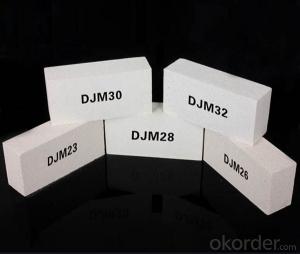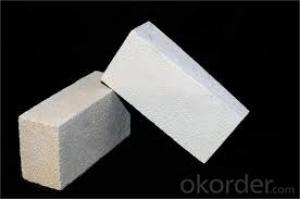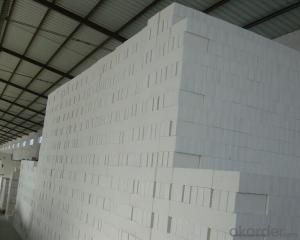Refractory High Alumina Thermal Insulating Fire Brick
- Loading Port:
- China main port
- Payment Terms:
- TT or LC
- Min Order Qty:
- 100 pc
- Supply Capability:
- 2000000 pc/month
OKorder Service Pledge
OKorder Financial Service
You Might Also Like
65% Al2O3 Min High Alumina Insulating Fire Brick
High alumina insulating fire brick is a kind of insulation material adopting organic matter as ignition loss substance in order to increase the porosity of refractory, which has such advantages as high porosity, small volume density, good insulation effect, high mechanical intensity, small thermal conductivity and long service life. For various industrial kilns & furnaces, it is a kind of essential refractory for energy saving and temperature preservation.
This series of High Alumina Insulating Fire Brick are made of selected high alumina bauxite, kaolin caly, hollow microsphere as the mian material.By shaping at high pressure and sintering at high temperature.
Product Applications:
High alumina insulating fire brick are ideal for use in the below applications
Building materials for blast furnace
Building materials for hot-blast stove
Building materials for coke oven
Building materials for steel making furnace
For construction material in steel industry
For ladle
Product Advantages:
CNBM has success in its High alumina insulating fire brick due to their cost-effectiveness and excellent insulating properties. The refractoriness of magnesia chrome bricks are more than 2000°C, and the refractory under load is a above 1550°C.Good steady volume in high temperature, the performance of meeting sudden cold and sudden hot is better than magnesia bricks.
Main Product Features:
Excellent thermal stability
High refractoriness under load
Chemical stability and anti-corrision
Small high temperature creep rate
Excellent thermal shock resistance
Product Specifications:
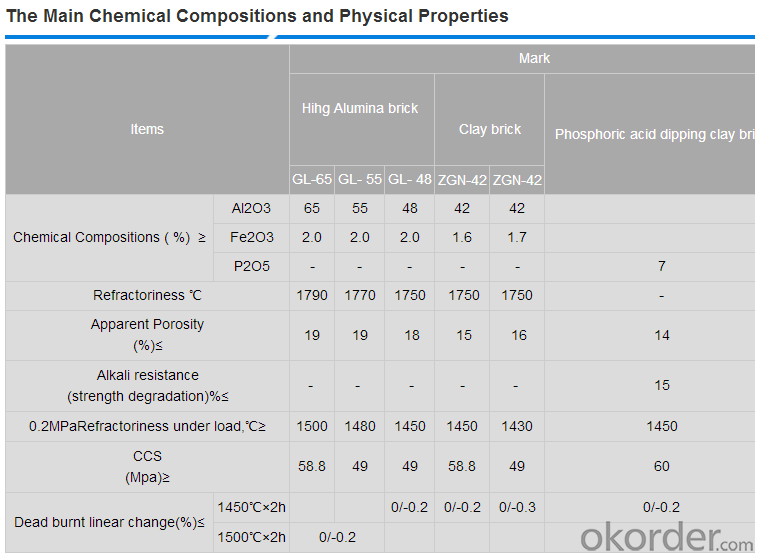
FAQ:
Q1: Are you a manufacture or trader?
A1: Factory+trade (mainly for manufacturing, also do some business of related products).
Q2: What's the MOQ of trial order?
A2: No limit,We can offer the best suggestions and solutions according to your requirements.
Q3: After an order is confirmed,when to deliver?
A3: According to your order quantity, normally, 15-25 days after deposit received.
Q4: Is your company accept customization?
A4: We have our own factories and excellent technical team, and we accept OEM service.
Product Picture
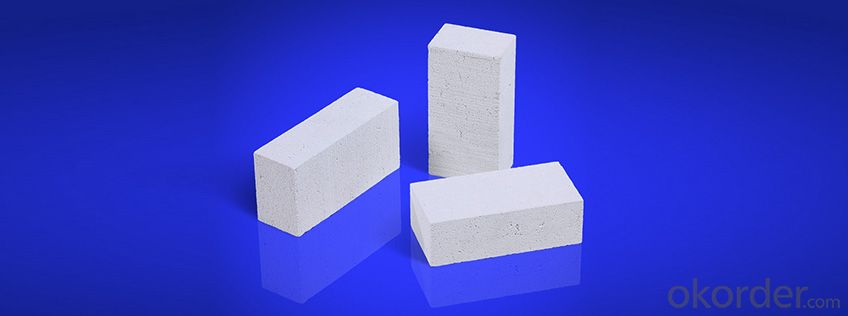
Produce Processing
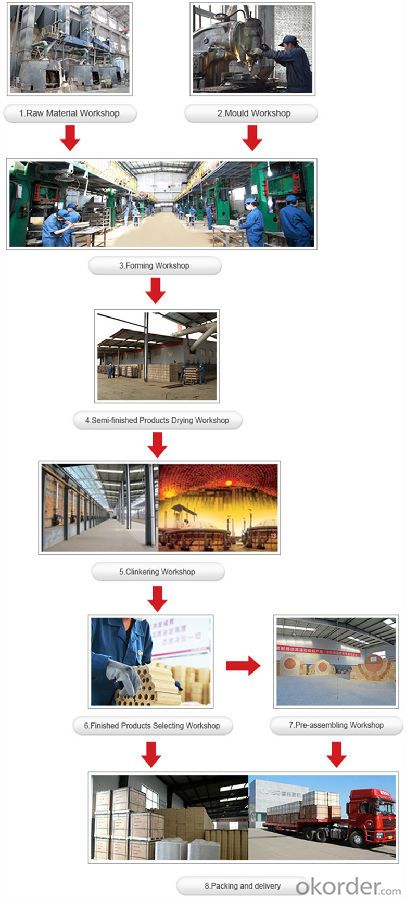
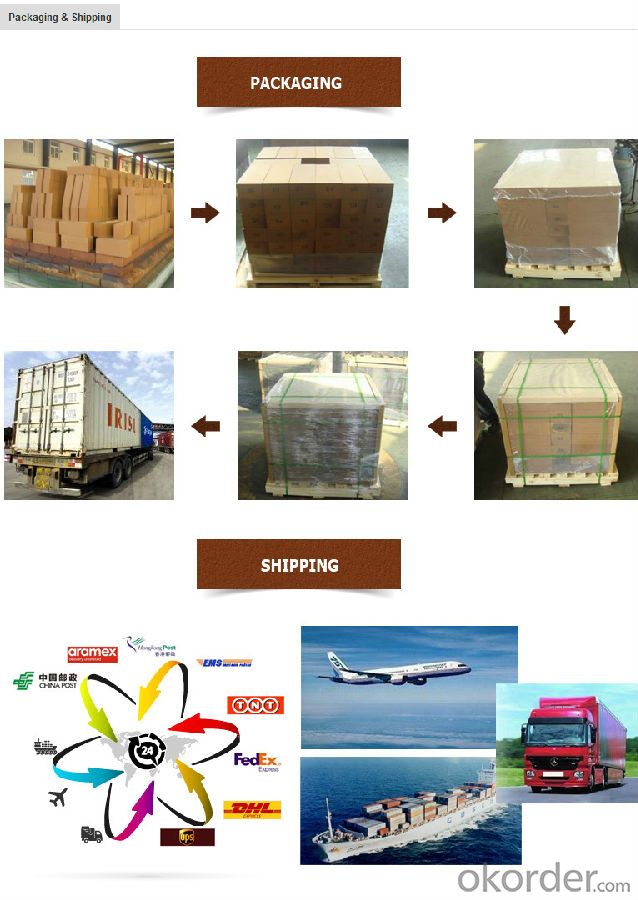
- Q:Are insulating fire bricks suitable for use in the construction of blast furnaces?
- Insulating fire bricks, crafted from lightweight materials like ceramics, prove to be a suitable option for blast furnace construction. These bricks possess remarkable insulating properties and exhibit low thermal conductivity. This quality aids in minimizing heat loss and optimizing efficiency within the blast furnace. Moreover, insulating fire bricks boast exceptional resistance to thermal shock, allowing them to endure sudden temperature fluctuations without any cracks or breaks. This attribute is vital in blast furnace construction, considering the intense heat that can rapidly deteriorate traditional bricks. Additionally, insulating fire bricks display high compressive strength, guaranteeing their durability and longevity amidst the harsh conditions of a blast furnace. In conclusion, incorporating insulating fire bricks in blast furnace construction not only enhances energy efficiency but also elevates furnace performance, ultimately extending its lifespan.
- Q:What is the porosity of insulating fire bricks?
- Insulating fire bricks possess a porosity that pertains to the quantity of vacant areas or gaps present in the material. These bricks are engineered to possess a considerable porosity, typically falling within the range of 50% to 80%. This notable porosity facilitates exceptional thermal insulation properties by entraping air or other insulating gases within the gaps. The air pockets function as obstacles for heat transfer, thereby diminishing the conduction of thermal energy through the bricks. Consequently, insulating fire bricks prove highly efficient in upholding elevated temperatures within industrial furnaces, kilns, or other high-temperature uses while minimizing heat loss. The specific porosity of insulating fire bricks can differ based on the manufacturing process and the desired level of insulation necessitated for a specific application.
- Q:Are insulating fire bricks suitable for outdoor applications?
- Insulating fire bricks are generally not suitable for outdoor applications. These bricks are designed to be used in high-temperature environments such as kilns, furnaces, and other industrial applications. They have excellent thermal insulation properties and can withstand very high temperatures. However, insulating fire bricks are not designed to withstand exposure to the elements and can be easily damaged by moisture, rain, and extreme weather conditions. They are not resistant to freezing and thawing cycles, which can cause them to crack and break. For outdoor applications, it is recommended to use fire bricks that are specifically made for outdoor use. These bricks are usually made of dense clay or other materials that can withstand moisture and weather conditions. They are more durable and can provide better protection against the elements. It is important to consider the specific requirements and conditions of your outdoor application before choosing the appropriate type of fire bricks. Consulting with a professional or supplier knowledgeable in fire bricks can help ensure that you select the right product for your needs.
- Q:Can insulating fire bricks be used in DIY projects?
- Yes, insulating fire bricks can certainly be used in DIY projects. These bricks are lightweight and have excellent thermal insulation properties, making them suitable for various applications. They are commonly used in projects such as constructing wood-fired ovens, fire pits, kilns, and even for building the walls of a forge. Insulating fire bricks can withstand high temperatures and are resistant to thermal shock, making them a reliable choice for DIY enthusiasts who want to create heat-resistant structures. They are also easy to cut and shape, allowing for customization according to specific project needs.
- Q:Can insulating fire bricks be used for insulation in refractory lining repair?
- Yes, insulating fire bricks can be used for insulation in refractory lining repair. Insulating fire bricks are made from lightweight materials that have excellent thermal insulation properties, making them ideal for use in high-temperature applications such as furnaces, kilns, and other refractory lining structures. These bricks have low thermal conductivity and high resistance to thermal shock, allowing them to effectively insulate and protect the refractory lining from heat, preventing heat loss and reducing energy consumption. Moreover, insulating fire bricks are easy to install and replace, making them a cost-effective choice for refractory lining repair.
- Q:Can insulating fire bricks be used as a refractory lining material?
- Insulating fire bricks can indeed serve as a refractory lining material. Their purpose is to effectively insulate against heat transfer by having low thermal conductivity. This quality makes them suitable for applications that necessitate the maintenance or control of high temperatures, such as kilns, furnaces, and industrial ovens. High-temperature environments require refractory lining materials to safeguard their structure against the intense heat generated within. These materials must withstand thermal shocks, chemical reactions, and mechanical stresses that occur during operation. Insulating fire bricks are a prime choice for refractory lining applications due to their exceptional thermal insulation properties and high temperature resistance. In addition to being excellent insulators, insulating fire bricks have the added benefit of low density, making them lightweight and easy to handle and install. This advantage proves useful in applications where weight is a concern or where frequent replacement or repair of refractory linings is necessary. It is important to acknowledge that the specific type and composition of insulating fire bricks may vary, and different applications may require different properties. Therefore, it is vital to consult with a refractory engineer or supplier to guarantee that the chosen insulating fire bricks are appropriate for the specific requirements of the application.
- Q:Advantages and disadvantages of external formwork and self thermal insulation block
- Exterior wall internal insulation technology, wall insulation is to heat insulation materials on the inside of the outer wall.Advantage:1) waterproof, weather resistance and other technical indicators of finishes and insulation material requirements are not very high, gypsum board, gypsum plaster mortar can meet the use requirement, convenient;2) the internal insulation material is separated by the floor slab and is only constructed within a high storey without scaffolding;3) in the hot summer and cold winter and hot summer and warm winter zone, the inner heat preservation can meet the requirement;4) for the existing buildings of energy-saving transformation, especially at present when the house sold to individuals, the whole building or the whole district unified transformation difficulties, only the possibility of internal insulation. Therefore, in recent years, the exterior wall insulation has also been widely used.Shortcoming:1) because of beam, slab, structural column will cause thermal bridges, more heat loss;2) due to the material, structure, construction and other reasons, the cracking of the facing layer;3) it is not convenient for users to decorate two times and hang ornaments;4) occupy indoor use space;5) the energy saving of the existing buildings is very disturbing to the daily life of the residents.6) wall under outdoor climate, the temperature difference between day and night and the large temperature difference between summer and winter, easy to cause the wall cracking.
- Q:Are insulating fire bricks resistant to gas permeability?
- Insulating fire bricks possess gas impermeability, as they are engineered with low porosity and high density. These bricks are crafted from superior refractory materials like clay or silica and undergo a unique manufacturing process that guarantees minimal pore size and compactness. Consequently, they excel at containing gases and averting leakage. Widely employed in high-temperature settings such as furnaces, kilns, and industrial boilers, insulating fire bricks play a critical role in ensuring efficient and safe operations by maintaining gas tightness.
- Q:Can insulating fire bricks be used in applications involving molten metal?
- Yes, insulating fire bricks can be used in applications involving molten metal. Insulating fire bricks have high heat resistance and low thermal conductivity, making them suitable for withstanding the extreme temperatures generated by molten metal. They can be used in applications such as furnaces, kilns, and foundries, providing insulation and protection against heat transfer.
- Q:How do insulating fire bricks compare to other types of refractory materials?
- Insulating fire bricks, also known as IFBs, are a type of refractory material that is specifically designed to have high insulating properties. When compared to other types of refractory materials, such as standard fire bricks or castable refractories, insulating fire bricks offer several distinct advantages. Firstly, insulating fire bricks have a much lower thermal conductivity than standard fire bricks or castable refractories. This means that they are better at preventing heat loss and can provide better insulation for high-temperature applications. The low thermal conductivity of IFBs allows them to effectively retain heat within a furnace or kiln, thereby reducing energy consumption and improving overall efficiency. Furthermore, insulating fire bricks are lightweight compared to other refractory materials. This makes them easier to handle, transport, and install. The lightweight nature of IFBs also helps reduce the overall weight of the refractory lining, which can be beneficial in certain applications. Another advantage of insulating fire bricks is their ability to withstand rapid temperature changes. They have good thermal shock resistance, meaning they can withstand sudden temperature fluctuations without cracking or spalling. This property is particularly important in applications where frequent heating and cooling cycles occur. Moreover, insulating fire bricks have a high level of chemical resistance. They are capable of withstanding corrosive environments and chemical attacks, making them suitable for a wide range of applications involving acids, alkalis, and other aggressive substances. However, insulating fire bricks also have some limitations. They have a lower density compared to standard fire bricks, which means they are less durable and have lower mechanical strength. This makes them less suitable for applications that require high load-bearing capacity or where heavy abrasion may occur. In conclusion, insulating fire bricks offer excellent thermal insulation, lightweight properties, good thermal shock resistance, and high chemical resistance. However, their lower density and reduced mechanical strength may limit their use in certain applications. It is important to carefully consider the specific requirements of the application before choosing insulating fire bricks or other types of refractory materials.
1. Manufacturer Overview |
|
|---|---|
| Location | |
| Year Established | |
| Annual Output Value | |
| Main Markets | |
| Company Certifications | |
2. Manufacturer Certificates |
|
|---|---|
| a) Certification Name | |
| Range | |
| Reference | |
| Validity Period | |
3. Manufacturer Capability |
|
|---|---|
| a)Trade Capacity | |
| Nearest Port | |
| Export Percentage | |
| No.of Employees in Trade Department | |
| Language Spoken: | |
| b)Factory Information | |
| Factory Size: | |
| No. of Production Lines | |
| Contract Manufacturing | |
| Product Price Range | |
Send your message to us
Refractory High Alumina Thermal Insulating Fire Brick
- Loading Port:
- China main port
- Payment Terms:
- TT or LC
- Min Order Qty:
- 100 pc
- Supply Capability:
- 2000000 pc/month
OKorder Service Pledge
OKorder Financial Service
Similar products
New products
Hot products
Hot Searches
Related keywords

